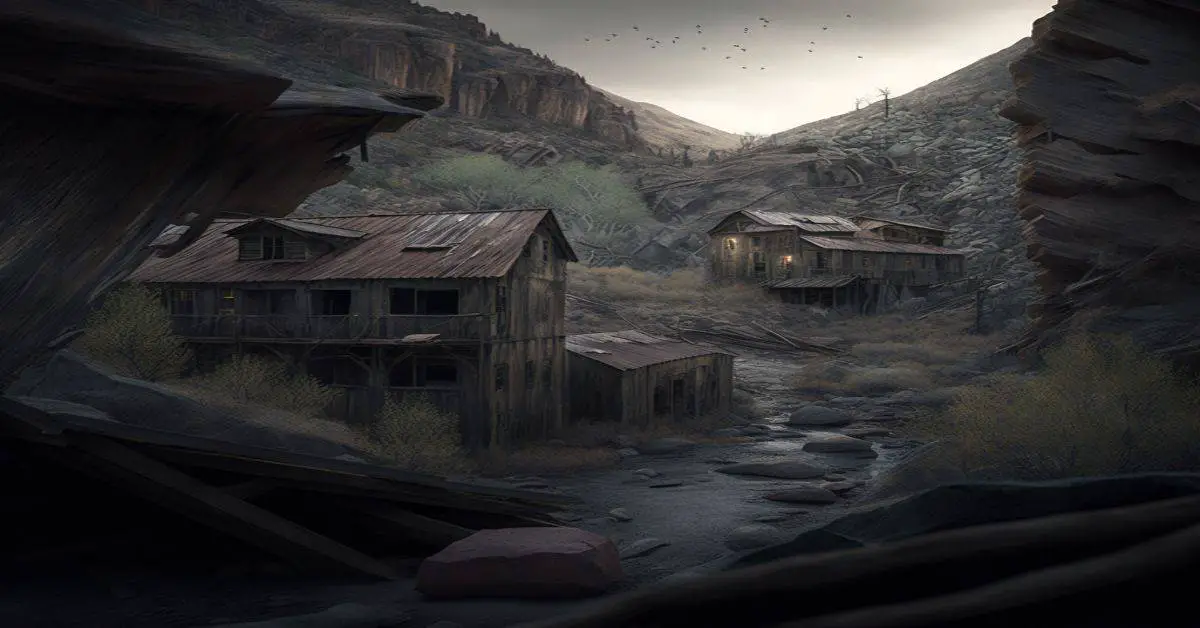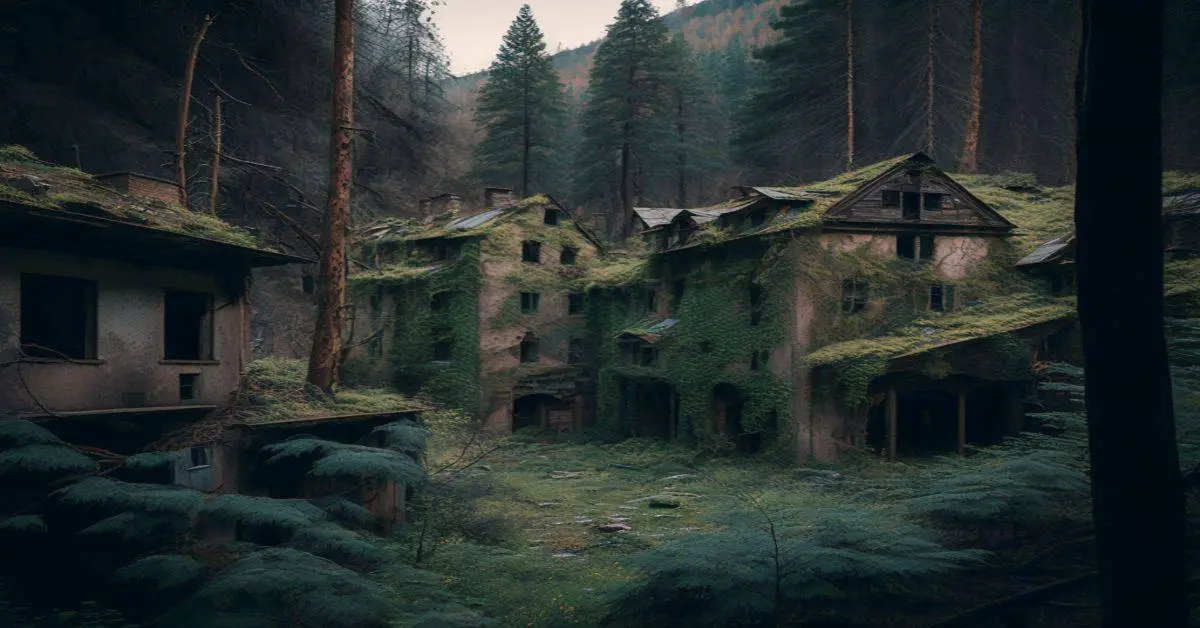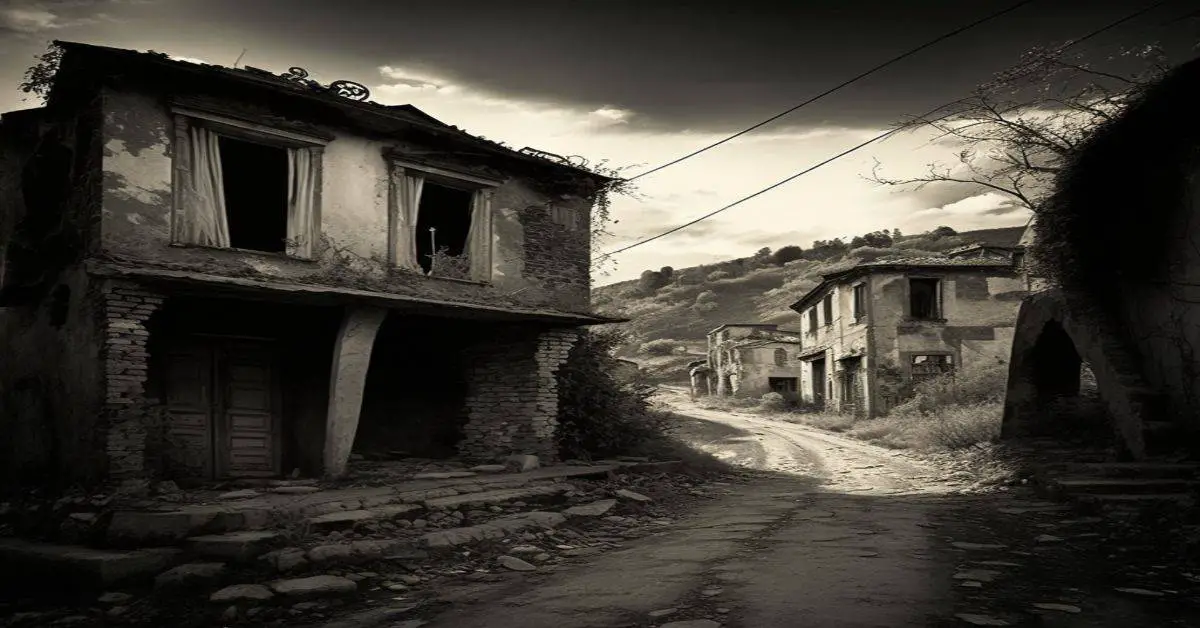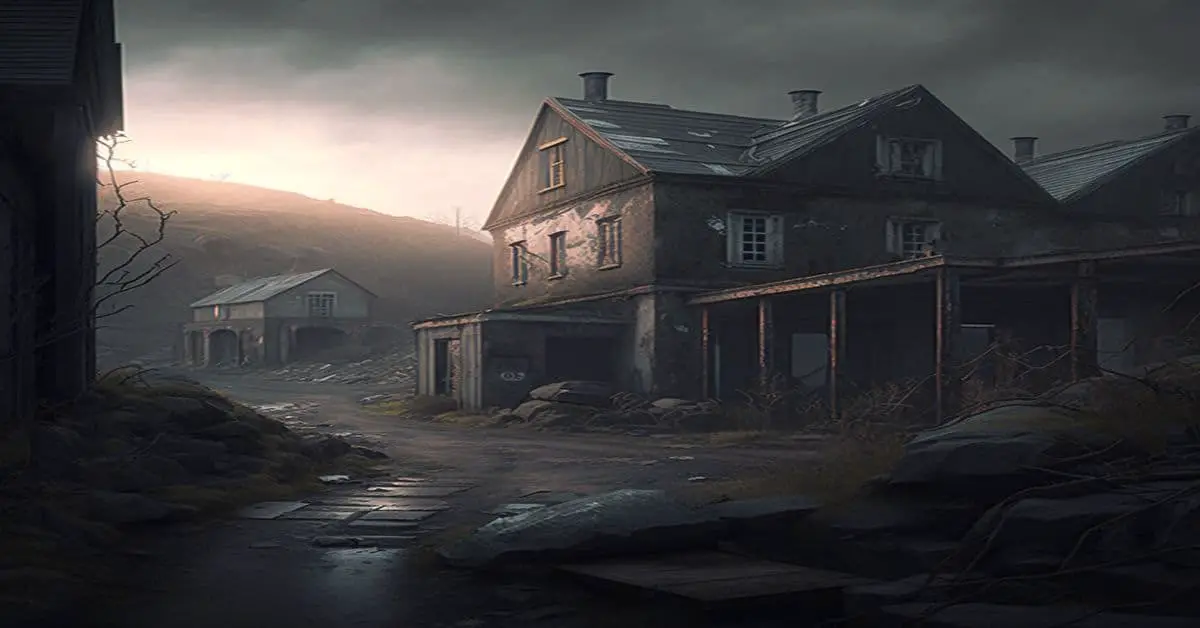The United States is a land of opportunity, but when people discover nothing left, they move on to something new. This happened with countless boom towns after the Gold Rush miners depleted all the gold, and Gilded Age industrial sites none could last forever due to their success in attracting wealth from other areas, which led them into ruin before our very eyes – it can be seen today as abandoned buildings across America where once thrived great cities.
America’s ghost towns carry the most peculiar backstories. Some began as lucrative mining communities that cleared out almost overnight. Some are casualties of new railways or interstates–others were once capital cities ravaged by nature and fate; these skeletons are now a stand-in for any number.
From a Hollywood western to one too many horror films! But what makes them fascinating? You’ll find answers here.
These 14 towns are a fascinating window into the past. They’re still alive in many ways, but you can feel how old they’ve grown since becoming silent film stars over 100 years. Then Esperanza started its long decline until today when few people live there anymore because it’s too expensive to keep up with modern life costs!
Cahawba, Alabama
The ghost town of Cahawba has an illustrious history of being the state capital and serving in such a role from 1820 to 1825 before flooding drove most residents away. It remained active during the cotton distribution era but was eventually abandoned when Union soldiers were captured there during War Between The States (1861).
By the 1900s, almost all structures had been demolished, making way for new towns with developing infrastructure that would serve as modern-day hubs like other areas do today; however, this story isn’t quite over yet.
Cahawba is a historically significant town, with plenty of things to see for history buffs today. The welcome center includes a fascinating museum and some remains from what was once this city’s peak – but don’t forget about all the other sites too!
You can take guided or self-guided tours throughout historic Cahawba; there’s no wrong way if you want your visit covered in detail because every inch has been thoughtfully planned out by those who know how important it was during the Civil War.
St. Elmo, Colorado
St Elmo is a ghost town that once thrived as an important mining and rail center. It had almost 2,000 residents in 1880, but due to the closure of mines by the 1910s with only enough shops for people who were left behind, there isn’t much else going on here other than post office service being discontinued, further sequestering them from society which led this small group living out their final days without any music or dance halls anymore until energy prices began rising again around 1920s.
The ghost town of St. Elmo is one you won’t miss out on if you are traveling through Arizona with an Angler’s Touring Company! The old structures still provide visitors with some nostalgia for days gone by.
Still, it also makes them realize how vital today’s preservation projects are- without this history being documented and preserved before damage can be done again in future years due to fires like those which have burnt down many historic buildings over time (such as The Town Hall). These parts would surely qualify if there was a place deserving love from all angles.
Bodie, California
Bodie, California, is one of America’s most famous (and largest) ghost towns. Established as a mining town back when gold was discovered here by William S Bodey – whoops, I mean “Mr.” The original camp size grew from 20 miners to some 10 thousand during California’s Gold Rush!
And just like that, everyone had left except for two people living on either side where they could still get food, at least until today if you’re lucky enough or have strong stomachs, or maybe there are no longer any animals left because this isn’t an animal-friendly place anymore.
The town is a National Historic Site protected by the California parks system. Buildings are in “arrested decay,” meaning they will only receive necessary maintenance that prevents them from deteriorating and collapsing; yet despite this arrestment of time’s progress, many things retain their original appearance– pool tables with balls still sit unused next to snuggly chairs for when you want some peace & quiet or would instead just read an old book while sitting on your porch swing under blue skies dotted pleasure fully between billowing clouds.
Kennecott, Alaska
The gold rush of the 1900s began in Alaska, where two prospectors discovered a rich deposit that would eventually be worth more than $200 million.
In 1903, the Utah Copper Company was born. With help from JP Morgan and other investors, they turned this humble mining town into a “self-contained company” with its tennis court and skating rink! One of Kennecott’s five mines held what is now considered one of -the world’s richest copper deposits–they named it ‘Bonanza.’
By 1938. However, there weren’t enough resources left for continued operations then, so three years later, all work stopped on two main shafts located about 1 mile outside options port republic.’
The iconic red mill on top of a mountain in the middle of Wrangell-St. Elias National Park is now open for visitors! The tour allows you to go inside and see how they used water power back when it was first introduced and at other historical sites throughout Alaska’s Interior ecosystem.
The Kennecott Mill Town Tour provides an interactive experience that teaches about its place within history while giving people access to this world outside city limits, where nature thrives without boundaries.
Glenrio, Texas/New Mexico
Glenrio is a small town that straddles the Texas-New Mexico border, so it’s technically part of both states. This allowed for obvious benefits like gas stations being built on one side where their tax was lower than others to take advantage or whatever else might need doing with their respective populations’ differences depending on how close you live to either location.
The history of this town could’ve been so much more. Founded in 1903, it served as a popular way station for travelers and home to those who traveled through on their way further westward towards Colorado or New Mexico when they were still part of the Union during America’s civil war. Still, once I-40 came along about halfway through the ’70s. That did it – there wasn’t enough business anymore.
Mystic, South Dakota
Mystic, South Dakota, is a ghost town that was once overcrowded with gold miners in need of supplies from its bustling downtown area. In 1876 Chief Sitting Bull started his small creekside camp near the present-day border between Minnesota and Wisconsin, where he would lead many Ceramic Corporation expeditions for buried treasures before moving on Buffalo Bill’s Wild West Show, which brought tourists from all around America, including President Teddy Roosevelt who visited three times during different stages throughout the 1900s.
Mystic has weathered many storms and attacks on its livelihood. From floods that destroyed bridges to sawmill fires, the town faced complex challenges but always found a way around them for Mystic’s milling industry to survive during these times and thrive as well!
The Great Depression had such an impact on this small community when limited resources made operating too much trouble–it wasn’t until after WWII ended that things took off again because there were so many more goods available now, thanks mainly due to President Truman taking necessary steps towards rebuilding America while also providing safety from invaders abroad through defense spending.
The town of Mystic was once a bustling center for transportation, but with the loss of train service and other businesses, this became easier. Now visitors have an opportunity when they enter McCahan Chapel, which has also been preserved by National Register listings, ensuring that its history will never be forgotten or altered in any way possible.
Shaniko, Oregon
The town of Shaniko in Central Oregon might not be one that you would typically think about when it comes to ghost towns. Still, this small community was once home to many ranchers and had an unusual amount of importance during its time.
Once deemed “the Wool Capital Of The World, “Shaniko’s rise and fall have been incredibly fast, with only twenty years passing between founding and closing down shop completely. The history behind these events is intriguing enough; however, adding some mystery to how they happened makes them all rather captivating.
By 1900, the Columbia Southern Railway had been extended to Shaniko. That year it produced 2 million pounds of wool and sold it for $ 5 million along this line that stretched all across Oregon into neighboring states!
But by 1910, things were looking for buyers: A new railroad cut off access from both ends – trapping businesses within its marketplace- while fires destroyed even more buildings leaving little hope for recovery ten short years later.
Shaniko is a ghost town that has been empty for nearly 50 years. The hotel, which was completed in 1902 and originally intended to be just an attraction with guest rooms and other amenities around it but eventually became more than this after adding businesses like schools or banks along “Shanik Row” during its first decade of operation – however, these days only two buildings remain The Sage Museum (which houses artifacts from across Wyoming) and City Hall- both sincere thanks seasonally solely due to their importance into history!
Garnet, Montana
Garnet, Arizona, was a bustling town with four hotels and two barbershops in its heyday. When you visit this picturesque little community today, it’s hard to imagine how anyone could have lived there before the fire destroyed half of what once stood—a Victorian-era settlement founded upon prospecting for gold alongside gemstones that were also discovered here: rubies, sapphires,emeralds-the “red rocks.” The mines had run out by then, though, after temporary occupancy, some buildings survived demolition or relocation.
The Garnet Mountain Trail in June and wintertime is when you can take your family on an adventure to remember. You’ll find more than 30 historic buildings left untouched, full of dishes or furniture; clothes too!
And suppose these aren’t enough reasons why people love visiting this beautiful town. In that case, two rentable cabins are available, just waiting outside any year-round doors, ready to welcome visitors into their warmth like never before.
Centralia, Pennsylvania
The town of Centralia, Pennsylvania, was once a bustling coal mining community with almost three thousand people living in its midst. Today “only” about five people reside there—but that number doesn’t seem so small when considering what has happened to them!
The entire region experienced an eerie change after smoke from illegal fireworks started filling their skies around 1965; today, it seems like every resident holds some piece or parcel right into this tragedy: parents whose children disappeared without warning while searching for lost pets along forest trails.
The people of the abandoned coal mine are not safe, and their town never recovered after the fire. Now only a handful remain to be taken advantage of by state officials who will eventually take all that they own through eminent domain as compensation for what happened here years ago – but these days, it’s usually just one person at most every year since nobody wants this place anymore!
Centralia is a town that few people know about, and those who do often forget it exists. The Coal Fire sits in the heart of this forgotten place- burning for around 250 more years with no sign to indicate what visitors should or shouldn’t do while they’re here, given its toxic chemicals present throughout most areas (and not just because the director Harryhausen used them).
Centralia is a place that has been passed by for too long. Many enjoy the thrill of driving down its buckled roads, but they soon find themselves trespassing on private property to get their joy ride from Centralia’s iconic landmark – Graffiti Highway! We can only wonder how this little town will unfold in our changing world as COVID-19 still empties more and more people without warning each day.
Rhyolite, Nevada
The rich and famous came to Rhyolite in their quest for gold but soon left when they couldn’t find any. It’s a shame because this once-bustling town had so much going on! You could enjoy hotels with spa treatments or take classes at the opera house while meeting friends over dinner with music by local symphony musicians performances-it indeed, was an exciting place where everyone knew your name.
The town of Rhyolite is famous for two reasons. The first is that it’s home to many ghost stories, including tales about a killer who rides his horse through town and kills anyone he meets on behalf of their sins in hell-fire, or how you can hear children playing when no one else seems too aware they’re gone.
It doesn’t take much imagination skill needed here because these types (of) stories have been around since before most people alive today were born! But all good things must come ́round to end eventually–and boy did ours.
Though Rhyolite has been abandoned for almost a century, it can be seen in old Westerns like The Air Mail. Visitors still see the skeletons of three-story bank buildings and parts from jails and general stores and other historic sites outside town, such as Goldwell Open Air Museum, which might hail among some of California’s most unusual roadside attractions – if not altogether unique ones!
Virginia City, Montana
The town of Virginia City, Montana, was initially founded as a gold rush community in 1863. The site became an essential hub for frontier settlers and merchants who were looking to make their fortunes upon the discovery of metals such as silver and copper, which led them to found other towns along these routes throughout western America; it also served a brief role during statehood process before becoming little more than one giant time capsule today preserving all aspects from Victorian-era life because no amenities like electricity or plumbing existed back then!
If you’re looking for a unique and exciting way to spend your vacation time, visit historic Centreville. The town has been preserved as an original timeline of America’s past with its restored buildings that include some original ones from the 1800s like smokestacks or train cars used by tourists can enjoy rides on horseback through this picturesque little community where live music spills out onto benches near water taxis waiting patiently at docks along Riverfront Drive during sunset hours while people-watching becomes easy because plenty things are going down all around!
Dawson, New Mexico
The town of Dawson, New Mexico, experienced an air tinged with sadness that none could compare to its tragic past. A company-town for the mining industries, which began in 1901, soon became known as home, never experiencing fewer than ten deaths per year until just before World War I, when things started taking a turn for the worse; it would be thirty-three years before another person died from these explosions at their peak there were numbers around 9 thousand people living within this community primarily recent immigrants. Still, they didn’t stay long after the disaster struck on July 16th, 1913.
After the mining disasters in Dawson, residents’ demand for coal slowly declined until it finally closed. The area was sold, and most structures were demolished while a few remains still stand as a testament to this tragedy that befell our town so many years ago ̶ but not without leaving their mark on what would become known far away from home.”
The abandoned town of Dawson, California, is now one of the most haunted places in America. Visitors have reported seeing lights like those on a mining helmet dancing around and hearing untraceable moans or voices while they were out exploring this haunting landscape that holds up nearly 400 crosses for its victims who lost their lives due to mine explosions – many more than can be accounted for by just two graves located at The Dawson Cemetery along with otherworldly entities such as ghostly figures Invisible if you get too close.
Batsto Village, New Jersey
When William Richards died in 1766, his 92-year-old company town went to a new owner. The Industrialist Joseph Wharton took over and tried out different ideas before also giving up on the village for what would be its final years as an active industrial site with agriculture experiments happening here, too; not sure if this was even worth investing time into anymore since there were much more successful towns nearby that had already been built or discovering such gems themselves without any help needed from anyone else!
The many buildings that remain in Batsto are the remains of an ironworks town during America’s Revolutionary War. The structures include a mansion, sawmill, and blacksmith shop, amongst others; all were once used to supply troops like those who fought for freedom here at home against England!
Today you can see these historical sites up close through guided tours or by mail delivery if needed – they’re also still operational, so don’t forget your letter before going out there.
Ashcroft, Colorado
The first prospectors to discover silver in 1880 created the Miner’s Protective Association, and immediately Ashcroft attracted 23 other miners. In just two weeks, they had built streets & a courthouse for their new town!
Within five years, three thousand+ people lived there- but like most mining towns, at some point, everything ran dry; by 1885, only 100 residents remained after most folks left due to lack of work opportunities or simply wanting something better than what life offered them back home (maybe).
When the Winter Olympics came to Aspen in the late 1930s, plans were already underway for a vast ski resort. The American bobsled team’s captain Billy Fiske (and youngest gold medalist), had partnered up with Ted Ryan, who helped build Highland-Bavarian Lodge, which became one of the earliest accommodations within proximity to events at what would become known as “The most famous mountain town on earth.”
When World War II came along, though, momentum slowed considerably until it finally died out after 39 long years, mainly because there wasn’t much else going on around here besides mining jobs. Still, these aluminum giants didn’t know how lucky they lived when considering all that happened.



